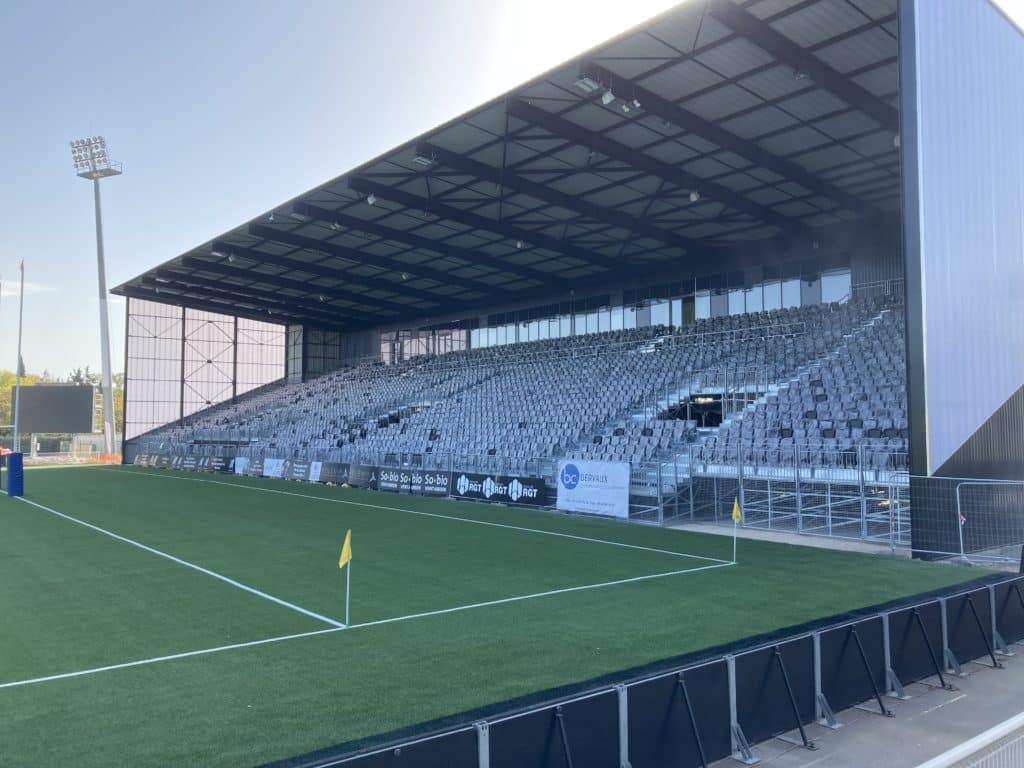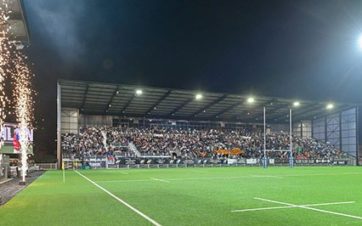
The Different Parts of a Stadium
Since their appearance in Antiquity, stadiums and their various components have evolved to meet contemporary needs. These structures are at the heart of our sporting and cultural events, welcoming tzns of thousands of spectators who come to enjoy their passions. Pages of history are written in these arenas. But what are the different parts of a stadium? And how do these elements work together to provide an optimal experience? This is what we will explore in this piece.
The Origins of the Modern Stadium and Its Evolutions
Stadiums have a long history dating back to Antiquity. The first known stadium was built in Olympia in 776 BC for the Olympic Games. In general, these venues served as gathering places for sporting competitions, as well as various other events, such as theater performances and religious ceremonies.
The first Greek stadiums, like Olympia, consisted of simple stands overlooking a clay field. In Rome, stadiums such as the Colosseum took the form of vast stone amphitheaters, designed to accommodate large audiences and host diverse performances, ranging from gladiatorial combats to chariot races.

The concept of the modern stadium evolved in the 19th century with the rise of organized sports and the need to create specific spaces to host these competitions. Modern stadiums are distinguished by their innovative architectural structures and their capacity to accommodate tens of thousands of spectators. These facilities continue to improve in terms of comfort and safety.
Today, stadiums are no longer just competition venues; they have become multifunctional centers used for concerts, cultural events, and other gatherings.
Types of Stadiums
In the past, a stadium was almost always designed specifically for the sports practice of its owning team. Today, it is increasingly common to create multifunctional stadiums for profitability reasons.
Single-Sport Stadiums
Single-sport stadiums are designed specifically to meet the requirements of a particular sport. For example, a football stadium will have a rectangular grass field, while a baseball stadium will have a diamond-shaped field with clay areas.

These stadiums are optimized to enhance the spectator experience based on the characteristics of the sport they host. They are often built by clubs that want to have their own facilities for specific use.
Multi-Sport and Multi-Purpose Stadiums
Multi-purpose stadiums are designed to host a variety of sporting and cultural events. They have modular fields and portable bleachers to adapt to different types of sports and events, such as football, rugby, concerts, and outdoor events.
These stadiums are increasingly popular because they maximize the use and economic profitability of what is often a significant investment.
Stadiums with Athletics Track
Athletics stadiums are specifically designed for running, jumping, and throwing competitions. They feature a standard 400-meter athletics track surrounding a central pitch, which can also be used for football or rugby matches.
An iconic example is the Munich Olympic Stadium (see below). However, Bayern Munich left it in 2005 for a stadium more suited to football, the Allianz Arena, as the athletics track pushed spectators too far from the pitch, reducing visibility.

Velodrome Stadiums
Velodromes are stadiums designed for track cycling competitions. They are characterized by their inclined oval tracks made of wood or concrete, allowing cyclists to reach high speeds relatively safely.
Olympique de Marseille once had a stadium of this type (below in its 1937 configuration). Although it has retained its name (Stade Vélodrome), the velodrome was removed in the 1980s. Velodromes can be either covered or open-air, often with stands surrounding the track to offer a clear view of the races.

The Parts or Areas of a Stadium
Of course, not all stadiums are the same. Depending on their purpose, they can be more or less developed. We will start by listing the essential parts of a stadium, such as the stands and the pitch, and then explore the features found in the most modern and luxurious stadiums.
Pitch
The pitch is the central element of any stadium. Its primary purpose is to provide a surface for the sport being played and ensure good visibility for spectators. The design of the pitch varies depending on the sport, with surfaces ranging from grass and artificial turf to clay. Proper drainage, turf maintenance, and surface quality are essential to ensure the safety of athletes and the quality of play.
Grandstands
The grandstands are the structures that accommodate spectators. They are designed to provide an optimal view of the pitch. The capacity and layout of the stands vary depending on the size of the stadium and its intended use.
Grandstands can be covered or uncovered and can include a variety of seating arrangements, such as quarter-circle bends, straight stands, or tiered rings. They may also feature VIP boxes, areas accessible to people with reduced mobility, and other facilities like restrooms.
Stands and Seats
The stands and seats are key elements for spectator comfort. While some older stadiums had standing areas, modern stadiums generally feature ergonomic and numbered seats to ensure maximum comfort and efficient crowd management. In some cases, the seating can be modular and removable to cater for different types of events.
What is the difference between grandstand, stand, and bleachers? Click on the previous link to find out!
Parking
Parking is an essential component of a modern stadium, particularly for large venues located on the outskirts of urban areas or downtown. Older stadiums that were not designed with automobile access in mind often face mobility issues.
Parking areas must be large enough to accommodate spectator vehicles and designed to allow smooth traffic flow before and after events. Modern parking facilities now include charging stations for electric vehicles and parking areas for bicycles.
Changing Rooms
The changing rooms are spaces dedicated to teams and officials, featuring showers, toilets, and rest areas. In the stadiums of professional clubs, there are also treatment and physical preparation rooms. Access to the locker rooms is strictly controlled to ensure the safety and privacy of the teams.
Access Areas: A Crucial Part of Stadium Design
Access areas include entrances and exits, ticketing, and security checkpoints. Managing these areas is crucial to ensure a smooth flow of spectators and guarantee safety during events. Modern technologies, such as electronic ticket scanners and metal detectors, are commonly used to speed up checks while enhancing security.
Stadium Walkways
Walkways are passageways around the stands that allow spectators to move easily within the stadium. They are designed to prevent congestion and provide direct access to the stands, service areas, and exits. Walkways must be wide enough to allow for quick evacuation if necessary.
Medical Facilities
Medical facilities in a stadium are crucial for the prompt management of medical emergencies for both players and spectators. They typically include infirmaries, first aid rooms, and sometimes even intensive care facilities.
Offices
Offices within stadiums are used by management teams, media, and sports organizations. They include workspaces, meeting rooms, and sometimes relaxation areas. These offices are essential for coordinating events and managing the day-to-day operations of the stadium.
Media Areas
Media areas are designed to accommodate journalists and media professionals within the stadium. They often include:
- A press box with a privileged view of the pitch (usually in the main grandstand)
- A press conference room
- Sometimes a live broadcast studio
These areas are equipped with modern technology to facilitate the work of the media.
Maintenance Facilities
A stadium is a complex ecosystem that requires significant maintenance. Therefore, it needs facilities to store equipment and house staff responsible for maintaining the pitch, stands, lighting, and sound systems.
Alcor: The Modular Stadium Grandstand Specialist
Alcor specializes in the design of stadium and events modular grandstands. Our solutions are flexible and adapted to all types of events, ensuring comfort, safety, and an optimal experience for spectators. We adhere to the strictest standards to offer high-quality stands. Trust Alcor for your modular grandstand requirements and optimize your stadium with our tailor-made and scalable solutions.



